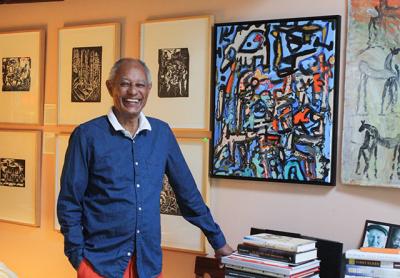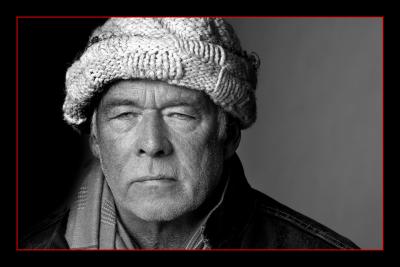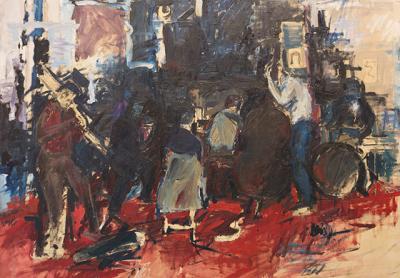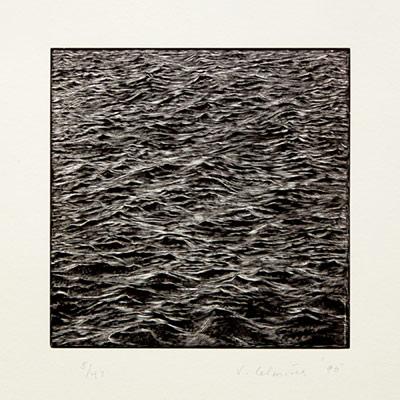Misadventures in London
Misadventures in London
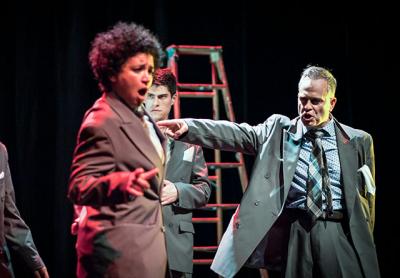
“We’re waiting for Wenzel,” the actor announced to the crowd at Guild Hall, seconds before the opening night of the play “Angry Young Man.” He was helping as an usher and must have read my name from the back of my assigned seat while I made a last-second dash to the lavatory. “Wenzel,” he let everyone know, “went for a tinkle.”
It was funny; I can take a little fun made at my expense. And anyway, to be incensed by this sort of playfulness is no way to begin to watch “Angry Young Man,” the zany, frenetic British play by Ben Woolf.
The title brings to mind (perhaps purposely) the famous “angry young men” series of British plays from the early 1960s. This cycle usually meant someone like Richard Burton or Richard Harris starring as a day laborer rebelling against his stifling lower-middle-class life via alcohol and violence. Mr. Woolf’s play, written just 10 years ago, has a decidedly modern twist, telling the story of Youssef, a surgeon from the Middle East who comes to London with the idea of starting a new life. That things don’t go anything like he planned hardly needs a spoiler alert.
It is a terrifically performed play, as each of the four players — two women and two men — intermittently narrate and dramatize Youssef’s journey through a hostile London. Nazli Sarpkaya, Rami Margron, and Max Samuels all take turns playing him, sometimes within seconds of each other. Each finds a new way to present Youssef that somehow, despite the gender and race differences, makes perfect sense.
Meanwhile, Christopher Daftsios (my bathroom inquisitor) plays a kind of Harpo Marx character, talking little but interjecting himself into every scene with hyperphysicality and impersonating, by turns, dogs, bus drivers, stone statues, and even rain, as he douses his fellow actors with a water bottle. Directed by Stephen Hamilton, these splenetic goings-on are performed with stopwatch timing, and the machine-gun-fast dialogue is employed with nary a misplaced syllable. This is the same cast that performed “Angry Young Man” off Broadway, and at this point their chemistry seems almost innate.
Where “Angry Young Man” is less successful is in the narrative itself, which isn’t as absorbing as it should be. Certainly there is a timeliness to Mr. Woolf’s drama, given the wave of nationalism that has swept across America and Western Europe. But the satire of Youssef’s misadventures in London is so broad at times that its targets seem like paper tigers, innocuous cartoons hardly worth our contempt. There is a disingenuous taxi driver who takes Youssef for all his money. There is a racist police captain. There is a crass yuppie businessman and his vapid girlfriend, the latter of whom, for some reason, Youssef is enamored with. With characters this stereotypical, it’s hard for a satire to draw any real blood.
As the social commentary falls short, what’s left here is comedy, which is carried off with exhaustive inventiveness and energy. There are plenty of laughs in “Angry Young Man,” including one hilarious sequence when the actors, in their usual frenzy, “accidentally” knock down the curtains at the back of the stage. Everything stops, and the actors look at the audience, stunned and ashamed, until a disembodied voice tells them to “keep going.” The joke is on us.
It’s only by the very end of “Angry Young Man” that you feel the actors’ weariness in keeping this leaky boat afloat. The actors sit together on the end of the stage completely spent, having for 80 minutes tried to whip middling material into something engaging. For the most part, they have succeeded.
Although an evening with “Angry Young Man” (which runs through June 18) may not tell us much about the immigrant experience or the English class system, it is an impressive showcase for four hugely talented actors. Like a multigender Marx brothers, they keep the audience laughing along with a subject not usually suited to comedy.
Just don’t be late to your seat.

